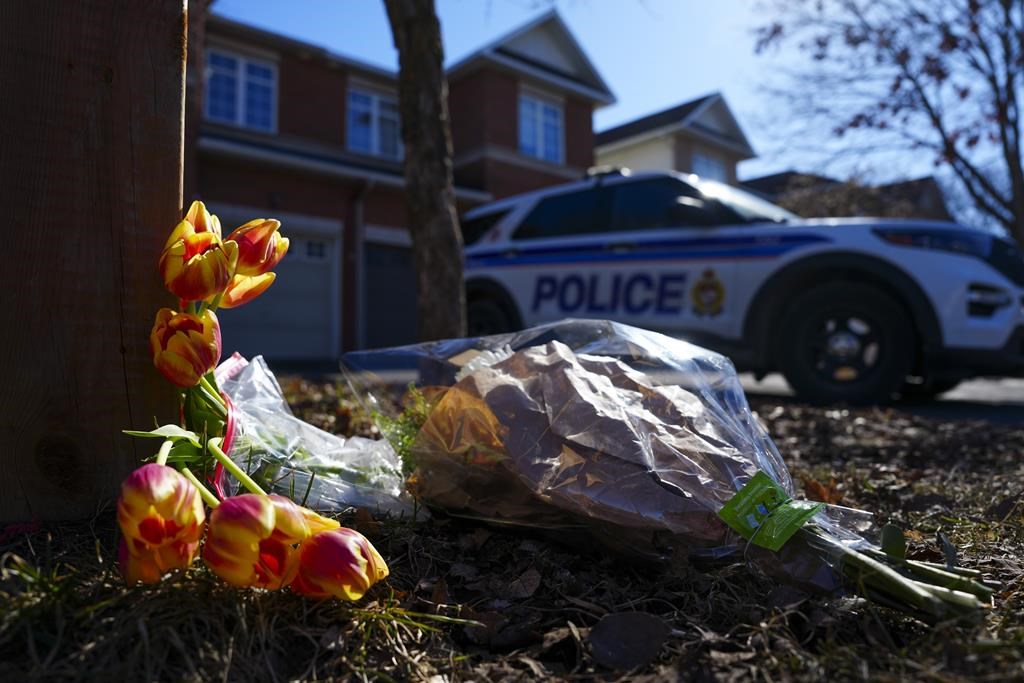Remember This? Peter Aylen and Ottawa hooligan group ‘the Shiners’
Posted Oct 19, 2020 01:00:00 PM.
OttawaMatters.com, in partnership with the Historical Society of Ottawa, brings you this weekly feature by Director James Powell, highlighting a moment in the city's history.
October 20, 1835
Bytown, the future Ottawa, was a rough place to live during the early nineteenth century. The combination of French, Irish, English, and Scottish settlers was a combustible mixture, especially when combined with religious differences, historic grievances, discrimination, a rigid social structure, poverty, and alcohol.
Mother Mcguinty’s Tavern, which was located in Corktown amidst the shanties that lined the Rideau Canal, and Firth’s Tavern close to the Chaudière Falls, were notorious watering holes. If those didn’t suit, there were dozens of other legal taverns as well as illegal grog houses to patronize.
Drunken fights and brawls were commonplace, especially when the lumbermen and raftsmen, the workers who brought the cut logs downriver, were in town to gather supplies for the lumbering season.
Despite being co-religionists, Irish and French Canadians often duked it out on the streets of Bytown. Folklore has it that Joseph Montferrand, big Joe Mufferaw to English-speakers, fought off as many as 150 Irishmen in 1829 standing in the middle of the Union Bridge that linked Bytown in Upper Canada to Hull in Lower Canada across the Chaudière Falls. The story has it that Montferrand, a muscular lumberman of considerable proportions, dumped each Irishman who challenged him into the Ottawa River. Montferrand came to be seen as a defender of French rights.
Matters only got worse after the Rideau Canal was completed in 1832 and work became scarce.
Unemployed Irish canal workers looked for jobs in the lumber industry, a business hitherto dominated by French Canadians. Tempers flared and fists flew. The Irish gained the upper hand against their French Canadian neighbours when they found a champion who organized them.
That leader was Peter Aylen.
Of Irish extraction, he was born Peter Vallely in Liverpool, England. He came to Canada in 1815, reportedly after jumping ship at Quebec. At some point he changed his name to Aylen. Little is known about his early years in Canada, but by the 1830s he had become prominent in the lumber business in the Ottawa Valley.
Aylen hired only Irish workers, a fact that endeared him to the Irish community in Lower Bytown. He was very successful, becoming a member of the “Gatineau Privilege” who obtained a monopoly to cut timber in the Gatineau River area. He also had lumber operations in the watersheds of the Bonnechere and Madawaska Rivers.
In the 1830s, Aylen built a substantial stone homestead on Richmond Road, which still stands today.
Aylen’s Irish followers were called Shiners. The origins of the term is obscure. One explanation is that it’s a corruption of the French word chêneurs, or fellers of oak. Another has it that they considered themselves to be the shining ones who stood out above all others. Yet other explanations have them named for the shiny tall hats that newcomers wore, or the shiny silver half-crown coins with which they were paid.
Regardless, the Shiners were hooligans who terrorized Bytown and the environs for years. Many offences were laid at their doorstep including stripping children naked in the snow, fouling wells, accosting women in the street and shattering windows. On one occasion, it is said that they broke up a funeral cortege and threw the coffin off the hearse into the street.
They were also accused of serious crimes such as assault, arson, rape and murder.
On one occasion, the pregnant wife of a farmer called Hobbs, who had somehow crossed the Shiners, was attacked while driving home in a sleigh with other female members of the family. Beaten with sticks, Mrs Hobbs tried to jump to safety. But her clothing caught in the sleigh and she was dragged over the frozen ground before coming free. The Shiners cut her team of horses loose from the sleigh and ran them off. The next day, the horses managed to find their way home. Their ears and tails had been mutilated.
According to the Capuchin priest, Father Alexis de Barbezieux, people said “Il n’y a pas de Dieu à Bytown.” (There is no God in Bytown.) Families without news of children who had gone to Bytown to work in the lumber camps feared that they had been killed.
Many years later, some believed that in the middle of the night at the Chaudière Bridge (the bridge that replaced the Union Bridge) you could hear the cries of drowned French-Canadian voyageurs and Irish Shiners, the victims of desperate fights who had fallen to their deaths into the rapids below.
In 1835, Peter Aylen stepped up his campaign to control the lumber industry.
Shiners began forbidding that timber rafts owned by French Canadians allowed to go down the Ottawa River to Montreal. Aylen also had bigger ideas — taking over Bytown.
Beatings and intimidation increased on the town’s streets. Special constables that were supposed to keep the peace looked the other way, or were in Aylen’s pay. If pursued, hooligans simply crossed the border into Lower Canada and evaded arrest. Even if they were captured, they had to be transported to Perth for trial as there was no jail or courthouse in Bytown. Poorly paid constables were loath to make the perilous 50-mile journey given the many opportunities for ambush along the way.
Despite the anarchy, the community’s wealthy elite in Upper Bytown didn’t take serious action to suppress the Shiners as long as problems were confined to Lower Town.
But when the Irish-French feud disrupted the all-important timber trade, and prices rose as farmers became reluctant to bring provisions to lawless Bytown, the town’s merchants woke up to the risks.
In August 1835, Peter Aylen challenged the elites politically when he took over the Bathurst District Agricultural Society, the pinnacle of Bytown society life. Drunken Shiners, furnished by Aylen with the necessary one dollar membership fee, overwhelmed authentic members and voted in Aylen and his friends as directors.
With this, Aylen had gone too far.
On October 20, 1835, a group of prominent Bytown householders established the Bytown Association for the Preservation of the Peace. They appealed to town magistrates for 100 guns to arm citizens. Vigilantes made nightly patrols in an attempt to maintain order.
As the army based in Barrick Hill was called out only on rare occasions to quell riots, the town formed a volunteer force, the Bytown Rifles, to combat the Shiners. However, the Rifles quickly disintegrated as nobody was willing to serve under its commander, Captain Baker, who was apparently something of a martinet.
Although the vigilantes had some success in keeping the peace, the Shiners continued to terrorize Bytown citizens.
In March 1836, the community’s leading lumbermen founded the Ottawa Lumber Association as a further step in suppressing violence in their industry. However, with Aylen as one of its officers, the first act of the new organization was “to improve the movement of timber” on the Madawaska River where Aylen had operations. This likely meant protecting Aylen’s timber interests from angry French Canadians.
In early January of 1837, Aylen and his gang disrupted the election of councillors to the Nepean Township Council held in John Stanley’s Tavern in Bytown. While Aylen was elected as one of the three councillors, he demanded that the other two positions be filled with his cronies.
A gang of 40-60 of his men, many of whom had arrived at the tavern walking behind a sleigh bearing a portrait of St. Patrick, stormed the meeting room, some entering via a broken window. Several of Aylen’s opponents, including James Johnson the founder of The Bytown Independent and Farmer’s Advocate, Bytown’s first newspaper, were violently beaten with sticks and horse whips in the meeting room and in the tavern’s courtyard.
Protests that Aylen’s supporters were not Bytown property owners and hence were ineligible to vote went unheeded. The meeting ended in disarray with legitimate attendees fleeing in panic, and the provincial statutes and other important papers destroyed. Order was only restored by intervention of the military.
An official inquiry into the riot was held ten days later by four Bytown magistrates. Most of the dozen or so witnesses who testified blamed Aylen for the affray.
Aylen and his cronies did not testify.
The magistrates concluded that vigorous measures needed to be adopted to prevent a recurrence of a similar breach of the peace. They recommended the establishment of a municipal police force and the building of a courthouse and jail in Bytown.
The Bytown Gazette didn’t comment on what it called the 'disturbances' until almost eight weeks after the riot at Stanley’s tavern, and only did so with “a good deal of reluctance.”
The newspaper cautiously concluded that “our more intelligent readers will doubtless perceive, that a subject of this nature will be viewed in many different lights by different men, that no detail of occurrences with satisfy every one.”
It thought there was enough blame to be shared around. “[A]lthough the disturbances have in general been attributed to the Lumbermen, under the cognomen of shiners, there have been instances in which our yeomanry have been the aggressors.”
The newspaper also opined that Bytown was being maligned due to the circulation of untrue or exaggerated stories.
Like the magistrates who held the inquiry, the Gazette thought that part of the problem was the lack of a jail.
“A wholesome dread of prompt punishment would deter them from committing [crimes].”
The newspaper also argued that there were too many unlicensed “Tippling Houses” where men could obtain alcohol. Legal tavern keepers should form an association to stop illegal drinking establishments. This would be an “effectual means of suppressing these hordes of vice from whence so large a portion of these disorders proceed.”
The Gazette stiffened its resolve against the Shiners when in early March 1837 armed men went to the house of James Johnson who had been beaten in the January riot on the pretense of searching for a man.
Shots were fired into the upstairs rooms. Fortunately, nobody was hurt.
The Gazette fumed that it was “high time measures were adopted to check them.” Poor James Johnson was to suffer yet another attempt on this life a short time later. This time, his three assailants armed with guns and whips nearly succeeded. Ambushed on Sappers’ bridge that linked Upper Town to Lower Town, Johnson had to jump into deep snow to save himself. He was rescued by passersby, but suffered a fractured skull. Fortunately, he recovered.
Unlike in the past when the Shiners could act with impunity, the three men who committed the outrage were captured and taken to Perth to stand trial. Although Aylen broke them out of jail, they were subsequently recaptured in late 1837 and served three years with hard labour in a penitentiary for attempted murder.
By this time, the age of the Shiners was fading.
Bytown citizens were themselves becoming better organized and less likely to be cowed. Aylen, who had been charged with a number of offences over the years without any apparent consequence, either sold or rented out his properties on the Upper Canada side of the Ottawa River, and moved to Aylmer on the Lower Canada side. There, he continued in the lumber business.
But in Aylmer, he apparently mellowed, becoming a respected member of the community. He even helped to build the area’s first church. He also became a member of the Hull Township Council in 1846, a Justice of the Peace in 1848 and the superintendent of roads in the mid-1850s. He died peacefully in 1868.
The Shiners continued to commit acts of violence into the 1840s, but without Peter Aylen at the helm, they faded into history.
Ottawa didn’t get a permanent police force until 1863.
The Aylen family remained prominent in the Ottawa area. Five generations of Peter Aylen’s descendants have been lawyers, including H. Aldeous Aylen, Peter Aylen’s great grandson, who was appointed to the Supreme Court of Ontario in 1950. In the year 2000, the legal firm of Scott and Aylen, co-founded by the Aylen family almost fifty years earlier, merged with a number of other firms to create Borden Ladner Gervais LLP, now the largest and oldest law firm in Canada with roots going back almost 200 years.










